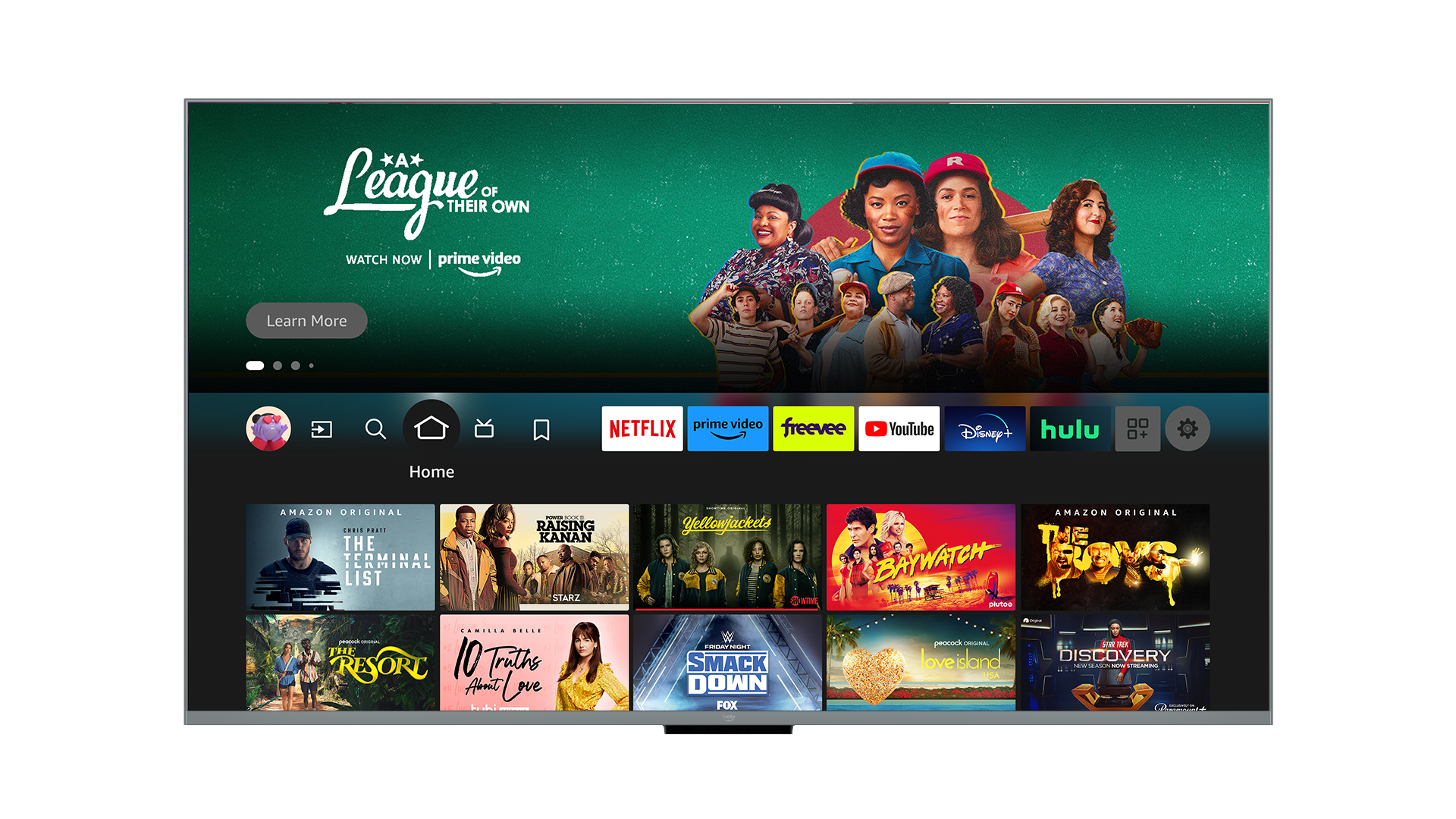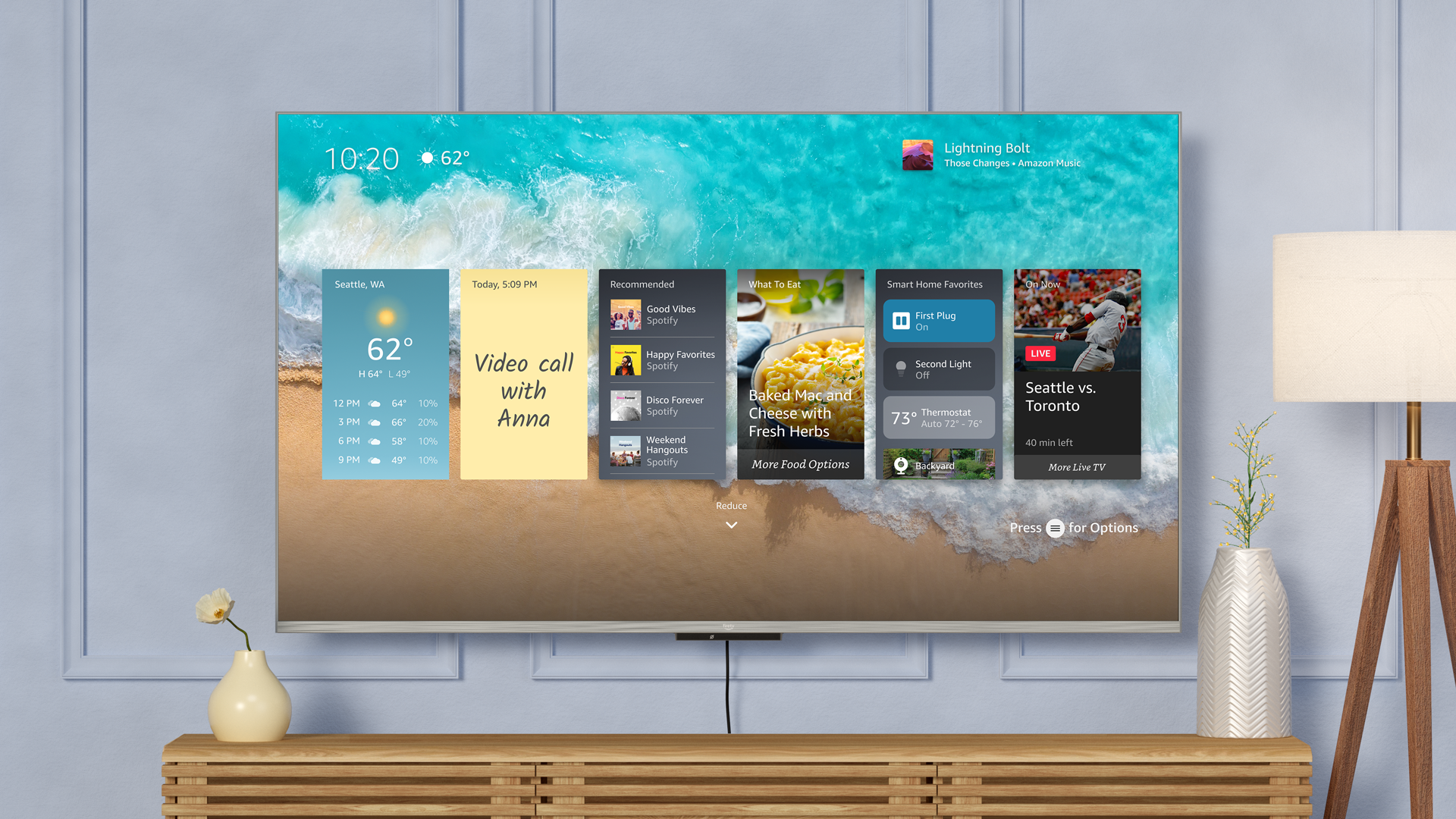
Time sure flies when you’re binge-watching, doesn’t it? That’s what I thought when I realized that it’s the 10th anniversary of Amazon’s Fire TV, which I think is one of those avenues of innovation that we don’t give enough credit to. Sometimes, consumer tech companies do a particularly good job of bringing technology into our lives that’s so smooth—that “just works”—we forget we’re using it. That’s how I feel about Fire TV as a consumer.
Sometimes we forget how hard it was to have a library of video content, available in every room in the home, 24 hours a day, seven days a week. Let me refresh your memory. Before streaming video services, we had Blu-Ray, DVDs, and, before that, VHS tapes. You could buy them or rent them from BlockBuster video or Netflix. You had to have a player in each room. I was one of the few and the proud who would rip their purchased DVDs onto a hard drive server and network it across the entire house via CAT5 or the first wireless networking. It was laborious, unreliable, and expensive. My, how the times have changed.
These days, I’m far from alone in my respect for Fire TV, which is the most popular family of streaming media players in the world. That’s saying something when you think about the innovations and market presence of its competitors, especially Roku. By this point, Amazon has sold more than 200 million Fire TV devices in more than 85 countries, and last year customers streamed more than 100 billion hours of content on those devices.
Below I share my A-list of Fire TV innovations, along with a little bit of my own experience of using Fire TV at home. Rather than go device by device, I thought it a bit more valuable to talk about capabilities.
Audio/Voice Commands
The very first Fire TV device was equipped with a microphone that you activated with a button. Today this may seem like a no-brainer, but in 2014, it was something special. I remember wondering why they put the microphone in the controller versus the console. After using it a few times it became evident that having the microphone close to my mouth increased its accuracy and only allowed one person to speak at once. It brought new meaning to “the power of the remote.” (Joke.) The company built on this in 2016 when it launched the first streaming stick with a voice remote. (One of my colleagues remembers buying three Fire TV Sticks back then so that she, her husband, and their teenage kids could stream to every TV in the house.)
In 2018, the first-generation Fire TV Cube became the first streaming media player to enable completely hands-free control of TVs from Alexa. In 2023 Amazon made the Fire TV Stick even better when it introduced the first-ever streaming stick to support Wi-Fi 6E, with nearly three times the frequency bandwidth of its predecessor. And it’s still so practical: who wants to hunt and peck through the on-screen keyboard to search for something when they could just say, “Search for Raiders of the Lost Ark”? By the way, more than 70 different streaming apps for Fire TV now include voice commands.
Alexa Integration
Anyone who knows me well knows I love smart home devices when they work right. Amazon has been very savvy over the years about integrating Alexa with Fire TV—starting in 2015—and making sure that all of it is interoperable with its Echo devices as well. I own over 75 Amazon devices, and the ability for these to interoperate is valuable to me. Sitting down to watch a movie with my wife is exactly the moment when I want these devices to kick into gear to dim the lights, turn off my music playing in the background, adjust the TV volume, and so on—and Amazon has made all of it seamless. Thankfully, Savant now has Alexa integration so I can control the Lutron lights and Somfy shades in my Austin condo. There are over 100,000 Alexa skills that owners can tap into.
Augmenting Other TV Brands
Like Roku, Amazon has partnered with many different TV makers to build its streaming platform right into the device, starting in 2017. Since then, Amazon reports, more than 280 models of TVs (and counting) have shipped with Fire TV onboard, including models from Toshiba, TCL, Xiaomi, and other big TV makers. I have never used one of these TVs, but the reviews look pretty good.
Amazon-Built TVs
Not content to have Fire TV live only on other makers’ televisions, starting in 2021 Amazon began offering its own TVs as well. This includes deluxe QLED devices up to 75 inches, but it also extends to the affordable Fire TV 2-Series for the budget end of the market. Amazon says that its smart TVs are the fastest-growing segment of the Fire TV business.
Accessibility
For starters, let’s think about how much easier it is for many people with motor issues, arthritis, or low vision to use voice commands rather than struggling with a remote control. But that’s just the tip of the iceberg here. In my conversations with people working on Fire TV at Amazon, they have been proud to point out their accessibility breakthroughs. In 2020, the introduction of Text Banner, which consolidates text on the screen into a single defined location, made TV more accessible for people with low vision induced by conditions such as macular degeneration or glaucoma. In 2022, Fire TV debuted the first-ever streaming media player in the U.S. to support the ASHA hearing-aid protocol, and then in 2023 it introduced the first streaming TV devices that stream sound directly into the sound processors in hearing implants. Those of us who don’t have to deal with vision or hearing loss might take this for granted, but for people who have low vision or who are hard of hearing, breakthroughs like this can completely change the experience of watching a smart TV.

Ambient Experience
Amazon has spent serious effort to think of all the ways Fire TV might do more for users, including when it’s not being used as a TV. This is part of the logic behind integrating Alexa—sometimes you want to pause the show you’re watching to have Alexa add something to your grocery list—and it’s really on display (pun intended) with the Fire TV Ambient Experience that launched late in 2022.
The short version is that the Ambient Experience takes advantage of your TV as (probably) the most advanced display in your home. It presents all sorts of useful information at a glance—news headlines, music, weather, your calendar, and so on. It can show you art and photographs from world-class museums, or display your own family photos. This is a great feature to justify why every room needs a 75-inch TV so you can “hide” it with a beautiful painting or photo. (Joke.) Since earlier this year, it will even let you create your own AI-generated art. And, of course, it’s all voice-controllable through Alexa.
AI-Based Search
The last A-list item I want to call out rolled out just a couple of months ago, and I think it’s going to be one of the applications of AI that folds into people’s lives seamlessly. With this search function, you don’t have to tell your Fire TV to find Raiders of the Lost Ark and then look for similar shows; you can just say “Find swashbuckling adventure movies.” It makes it easy to search by topic and genre, or even based on a specific quote from the movie (Amazon’s example: “What movie has the line, ‘You’re killing me Smalls?’”) or plot elements (“Find funny heist movies”). I think that is going to be a big winner for people sitting down to relax at the end of a long day who don’t know exactly what they want to watch. Full transparency: I haven’t tried this yet, but will soon.
Those are my picks for the Fire TV innovations that impress me the most. I have no doubt that another ten years from now, we’ll be talking about still more features of Fire TV that we haven’t even imagined yet but that will be part of our everyday TV-watching experience then. I can’t wait to see what Amazon’s consumer electronics head Panos Panay and his team will do!






















































































